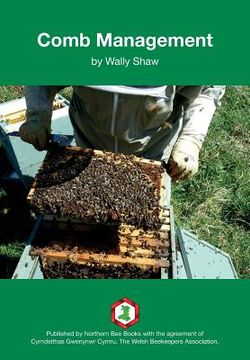Share
Comb Management (in English)
Wally Shaw
(Author)
·
Northern Bee Books
· Paperback
Comb Management (in English) - Shaw, Wally
$ 9.26
$ 11.00
You save: $ 1.74
Choose the list to add your product or create one New List
✓ Product added successfully to the Wishlist.
Go to My Wishlists
It will be shipped from our warehouse between
Monday, May 13 and
Tuesday, May 14.
You will receive it anywhere in United States between 1 and 3 business days after shipment.
Synopsis "Comb Management (in English)"
Honey bees can successfully live in all sorts of different nest sites - a holein a tree, a chimney pot or a bee-hive - but in all cases this is just a cavity inwhich to make a set of combs. It is in and on these combs that all the withinthe colony functions occur. Because it is dark in the hive, communication isthrough pheromones or vibration and combs provide the ideal carrier for thisinformation. For example, bees can always locate the queen by followingthe trail of her footprint pheromone on the combs. The main outside thehive activities are foraging, swarming and queen mating. As beekeepers, interested in the production of honey, we tend to concentrate on the foragingactivities of our bees and it is easy to overlook the fact that over 95% of atypical worker bee's life is spent within the confines of the colony engaged insome activity in or on the combs. In a sense, the combs are an extension ofthe bees that made them and it is bees and combs together that constitutethe colony.Up until about 1850, bee colonies, whether wild of under human stewardship(it hardly qualified as management), built themselves a set of combs entirelyaccording to their own design in whatever cavity they could find or wasprovided by the beekeeper. No restriction was placed on the way the colonyused these combs to engage in their main activities of brood rearing and foodstorage. With the introduction of the moveable frame hive, followed quickly bythe invention of wax foundation and the queen excluder, everything changed.Beekeepers were now able to induce the bees to make their combs wherethey (the beekeepers) wanted them, ie in wooden frames. The beekeepercould now even influence the size of cells they built by the dimensions of thehexagon embossed on the sheet of wax. It also became possible to separatethe use of combs for brood rearing and honey storage using a queen excluder.Some of the changes that modern beekeeping has imposed on colonies havepotential effects on the health and welfare of the bees and others do not.
- 0% (0)
- 0% (0)
- 0% (0)
- 0% (0)
- 0% (0)
All books in our catalog are Original.
The book is written in English.
The binding of this edition is Paperback.
✓ Producto agregado correctamente al carro, Ir a Pagar.

